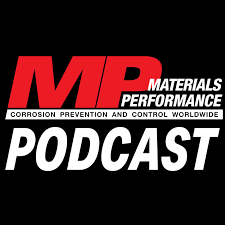As a winner in the 2023 MP Corrosion Innovation of the Year Awards, the GeneCount Voyager is a deployable, 16-well qPCR thermal cycler instrument that LuminUltra has paired with a portfolio of GeneCount qkits for sample preservation, DNA purification, and and qPCR assaying of microbial targets associated with microbiologically influenced corrosion (MIC).
According to the company, quantifying these MIC-associated microorganisms can give insight into a system’s corrosion risk and the efficacy of its management programs.
In a recent MP podcast interview, Dr. Jordan Schmidt—senior director of technology and innovation at Fredericton, New Brunswick, Canada-based LuminUltra—explains the evolution of the company’s winning innovation and where it stands today. Other discussion topics include Schmidt’s perspective on market trends and demands; feedback by end users and clients; his outlook for the future.
This is a partial Q&A transcript of that conversation, with the complete audio interview embedded beneath this article.

Q: Tell us about your innovation and its origins. How did it come to be, and what is the market demand or shortcoming that it seeks to address? Walk us through the development cycle and how it got to today.
Schmidt: Historically, we’ve been an ATP [adenosine triphosphate] company. ATP is a measure of the total active biomass, but it doesn’t tell you what that biomass is. Over the years, we were always asked, “What are the organisms? Do I have sulfate reducers? Do I have methanogens? Do I have iron reducers?”
That, really, was the origin. We can do that [testing] through sequencing, which would be kind of like a 23andMe-style test. You take a little sample and send it in to us, and we analyze it. But we knew there was going to be a market for doing that testing yourself, and especially in remote areas or within technology centers of excellence across different industries.
We started to consider, if we were to do a corrosion panel, what organisms should we be focused on? The role of different types of organisms has sometimes been understated, historically, because of our ability to measure them.
We’ve talked a lot about sulfate reducers, but we don’t talk a lot about methanogens. That's largely because methanogens are really hard to measure… using traditional culture methods. If you can’t measure it, you don’t necessarily know what its impact is. That’s the great thing about qPCR. You can measure just about anything, as long as you have an appropriate gene target to look for.
There’s also the speed of results. If we’re looking at something like sulfate reducers and taking weeks to get an analysis back with culture testing… with qPCR, that’s something that we can do in a few hours.
The COVID pandemic really showed people the power of PCR [polymerase chain reaction] testing, and it’s largely the same technology that we’re using for corrosion. We have a small PCR device that can fit into a pelican-style case. You can carry around our qKits for the actual analysis.
We have a long history in developing test kits that are comprehensive enough to get good results, but not so difficult that a novice user can’t use them. That’s where we found this niche. Our engineers are always looking for different ways that we can simplify steps that might be very complex. By using some ingenuity, we can figure out an easier way to do it, or an easier way to explain it to an end user.
The panel will also include some typical targets like total bacteria and total archaea. We’ve also started to incorporate some really novel targets, like corrosive methanogens. This was a target that ExxonMobil identified and published about, a few years ago. They call it micH.
It’s not something that has been widely used in the industry, but that’s the nice thing about qPCR testing. As we start to identify some very specific organisms, or groups of organisms, that are really impactful… we can very easily make new targets to capture and measure those organisms.
As far as the total workflow, it’s really an end-to-end solution. We’re looking at sample preservation and purification, different types of assays for organisms of concern… and then the equipment, to support running that test.
Q: As for as the future of this technology, what are the next few years potentially going to look like?
Schmidt: The equipment and the current assays are on the market, and they’re available for sale now. We were at the AMPP conference [2023 AMPP Annual Conference + Expo] in March and ISMOS [International Symposium on Applied Molecular Microbiology in Oil Systems] in June. That targets total prokaryotes, total bacteria, total archaea, methanogens, corrosive methanogens, sulfate reducers, sulfur oxidizers, and iron reducers.

Where the future comes in… is with finding more novel, unique targets to support decision making. We see the industry moving towards making more data-driven decisions and using data-driven analytics. They’re focused on things like Power BI and informed decision making.
We see a world where the results need to be quick, and they need to be comprehensive and accurate. So, as far as where it goes from here, to me it’s about expanding that asset portfolio. As research evolves, we can look at more specific targets to drive action.
Right now, we can do the testing, and we can get results. There’s still a lot more that the industry needs to figure out… in terms of what comes next. We’re really excited to be part of that innovation curve.
Q: What feedback have you gotten from end users and clients, as far as how this is performing out in the field and in real-world scenarios?
Schmidt: It’s been tremendous. Where we’ve had it in the field, the feedback has been extremely positive. We’ve had situations where people are doing testing to reopen oil wells in Western Europe… in response to the invasion in Ukraine for energy independence. The ability to do fast testing has been absolutely critical.
I think people are really looking forward to kind of this next evolution of microbial testing within the industries that we support. The feedback is largely, “We’re just sick and tired of having to wait so long to get results that we can’t actually make informed decisions. We’re just using test results right now to validate what that what we did was wrong or right. But if we can get these results quickly, then we can make informed decisions and become much more efficient and profitable as we operate our system.”
It’s been a really fun space to be in.
Q: Where do you see the future, as far as demands in corrosion control? How is your company developing its technologies and preparing for those types of demands, or market trends?

Schmidt: One of the things we’re really seeing is this push towards a circular economy, as well as a related push to environmental sustainability and governance. Companies are trying to make sure they’re operating much more efficiently and profitably.
Microorganisms have a big role to play in that. Whether they’re degrading assets or reducing heat-transfer efficiency, there’s a lot of different roles. Maybe it’s degrading products. One industry that we work in a lot is the fuels industry. With the push towards sustainable fuels and biodiesel, those fuels are a lot more biodegradable. They cause a lot more problems for engines, as well as for long-term storage.
So, being able to quickly measure, “Is this fuel clean? Do we need to take corrective actions?” It’s so critical. As we’re having these trends for sustainability, there’s also the trend of heavy scrutinization of the biocides that we use. In the aviation market, there’s not a lot of biocides that are even allowed to be used anymore. There’s a lot of industry pressure from the sustainability side.
But that also presents an opportunity to look at our processes holistically and to determine, “Are we operating at peak efficiency? How can we drag those last little bits out? How do we increase from X percent to go a little bit higher?”
Understanding that general ROI [return on investment] is really where we’re at. It’s less by brute force and more about getting into the art of managing these systems. You’re trying to make sure you’re not unnecessarily spending money to fix problems once they’ve become a big issue. Instead, spend a little bit of money to fix it when it’s a small issue. Detect it, fix it, and move on. That’s largely where I think markets are going.
In terms of how we’re preparing for those trends, we continue to do research with a lot of our partners. We generally consider ourselves to be a solution-focused company. So, while we sell products, we’re engineers and scientists. We want to solve a problem. We don’t want to just do a test. Our job doesn’t necessarily end there.
So, we work with a lot of our clients and customers to help them gain a better understanding of what the results mean, as well as how we take that number and translate it into action.
There are different kinds of elements that we work on there. It could be developing new assays for unique or novel targets, like the one that ExxonMobil identified with micH. They’ve also got other targets, such as a micC, that they’ve also been looking at.
Those are really the two big things. It’s new targets, and then interpretation of the data. We’ve worked with different companies around the world to help interpret their data, and then turn that into something that can be simplified and distributed out into remote areas.
Source: LuminUltra, www.luminultra.com.